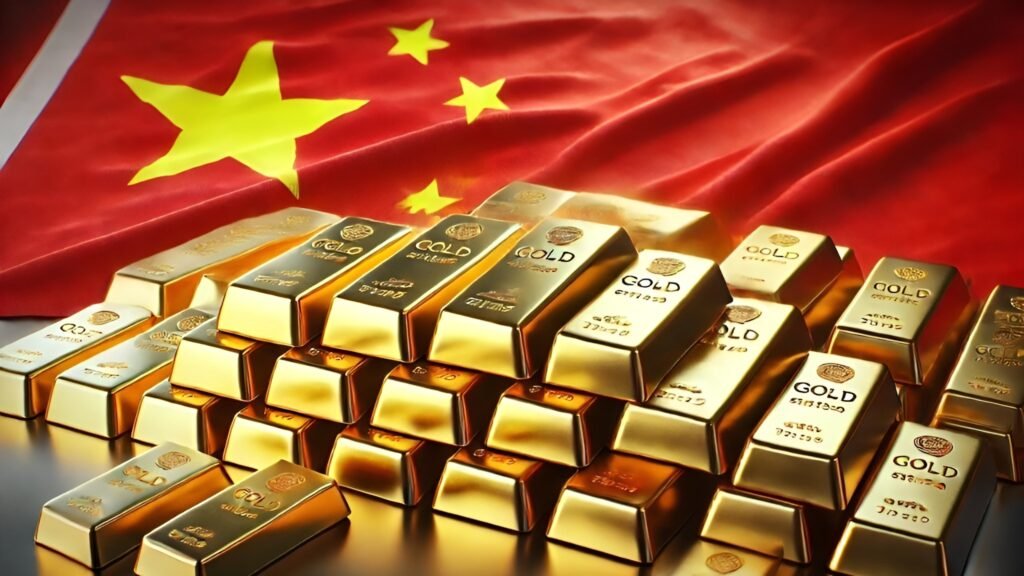
China Gold Demand Is Sky High: Current Data and Trends Driving 2024 Upward
Introduction
The year 2024 is proving to be an extraordinary one for gold demand in China. Economic conditions and geopolitical events have combined to produce some very noticeable changes in individual and institutional behavior. Analysts and investors alike watch China closely, as the gold demand from the world’s largest consumer can easily shake the global market. This article looks into China’s increasing demand for gold, analyzing domestic policies, global changes, and the market in regard to gold in China.
Wonderful Start to 2024: Best Opening Ever
China wholesalers started the year off with an unprecedented 271 tons of gold demand reported in January. A big part of this increase was due to stock building in advance of the Chinese New Year, in which gold holds traditional value both for celebrations and investment. Simultaneously, the People’s Bank of China (PBoC) added to its buying streak that has now lasted for over a year, adding to its reserves, and reflecting the state’s belief in gold as a near-permanent reserve asset.
Gold holds a special place in cultural practices around Chinese New Year, where family reunions and gift-giving are a tradition and where wealth and prosperity augment happiness. This seasonal uptick usually drives increased demand for jewelry. But instead of buying to put on and wear out, rising prices are pushing more consumers into lighter pieces or into investment pieces such as gold bars and coins, also known as gold, as the new safe bet when times are hard.
Economic stimulus and interest rate policies impact
The Chinese bureaucrats announced a strong stimulus package in mid-2024 as a countermeasure against slowing growth. This “stimulus bazooka“—targeting economic recovery—has affected consumer expenditures and investor sentiment. The main actions included interest rate cuts and policy stimulus in related areas such as real estate and consumer sectors. These initiatives are likely to boost the economy and help the demand for discretionary items such as gold.
Gold Demand vs GDP Growth Relationship

In the past, growing economies in China meant a growing demand for gold. Economists forecast that each one percentage point increase in GDP could see gold jewelry increase alongside a 5.2% increase in gold bars and coins. If the stimulus works as intended and drives up GDP, persistent demand could lead to new demand records for China’s gold industry by year’s end.
Trends We Are Seeing Mid-Year: Jewelry Demand Vs. Investment Demand
There was much demand coming into 2024, but there was a change in Q2. Gold prices have soared, and consumer demand has suffered from this phenomenon in terms of jewelry purchasing. In contrast, demand for investment, mainly gold bars and coins, soared. Investment demand for gold increased 68% y-o-y to now obviously over-weighted 110.5 tons in merely Q1— the largest single quarterly gain in more than seven years.
The Increasing Attraction of Gold as a Safe Haven Asset
As the economy sags and the property market falters, more and more Chinese embrace gold as a refuge. Gold is bigger in bars and coins than in jewelry. While this may seem an expensive shift to luxury, it is actually a vote for more opportune buying. Against the backdrop of domestic and global financial uncertainty, this trend highlights the attractiveness of gold as a hedge against this uncertainty.
August saw this in the third quarter: record prices and the market reaction to them.
As of April 2024, gold touched record highs due to global geostrategic tensions and demand. However, those prices have also dampened some consumer demand, particularly for jewelry. China’s gold market in the first three quarters of the year dropped 11.18% year-on-year to around 741.7 metric tons. This drop, mainly owing to elevated prices, showcases how sensitive Chinese consumers are to luxury prices.
Continued Central Bank Buying Remains Supportive of Demand

While consumer demand for jewelry fell, central banks remained bullish on gold, and the People’s Bank of China has been adding to its gold reserve. The government-supported demand will offset some of the fall in this demand. It will help provide long-term stability in the market as it signifies confidence in gold as a strategic asset.
Geopolitical Factor: Global Conflict Scenarios
In addition, the prevailing geopolitical issues, particularly related to the Ukraine war and the deteriorating relationship between the U.S. and China, have made gold highly alluring. Due to geopolitical risk and inflationary pressure, Central Banks across the world, most notably China, Turkey, and India have been stockpiling gold. This shift towards gold has been part of a broader move by countries to diversify their reserves outside of international currencies.
Why Gold is a Hedge Against Global Uncertainty
Gold reached a nominal high in April 2024, spurred in part by concerns relating to geopolitical instability. This subsequently confirms gold as being the most favored safe-haven asset, especially in times of economic and political uncertainty. Against the backdrop of changes in the international landscape, gold, the safe-haven asset, offers protection from uncertainties. In contrast, in the local market, gold assets have a better prospect for value than other assets.
Technological and Market Innovations: The Impact of Digital Gold
With the increasing popularity of digital financial products, Chinese investors are also considering digital gold. With digital gold, consumers can now invest in gold without needing to physically store the gold, providing a convenient gold alternative, particularly for young investors. This reflects a larger global trend towards digital assets due to broader access to the internet and the growth of interest in financial technology.
Bitgold and Fintech
Digital gold platforms are gaining momentum in China due to the growing needs of consumers who wish to gain exposure to gold without the hassle of physical ownership. This has expanded the gold investor base, particularly among tech-savvy millennial and Gen Z demographics. The increasing integration of digital gold into China’s investment scenario may provide a new layer to the country’s gold demand, providing a partial cushion for the volatility exhibited by physical gold consumption.
What Lies Ahead for the Gold Market in China in 2024 and Beyond

Sustained Government Stimulus: If the stimulus works, it may increase demand for luxury products such as gold jewelry.
Gold Demand Driver #1: Geopolitical Stability or Instability: Continued global tensions should provide gold with a haven appeal
Long-term Reserve Asset: The PBoC’s continued gold buying activity may signal that gold is here to stay as a long-term reserve asset and may also influence the confidence of other investors.
Expansion of Digital Investment Avenues: The growth of digital gold platforms will only draw new lines into the gold market, creating a more diverse demand base.
Conclusion
China’s gold demand has remained resilient in 2024 despite a struggling economy and strength in gold prices. Jewelry consumption was facing challenging headwinds; at the same time, the investment demand buoyed by the purchase from the central banks and the economic stimulus measures has proved to be strong. Gold continues to remain popular because it is a cultural symbol and an asset. With China recovering from its economy, there will be changes in the gold market, which is why gold shines—because these changes are underway.
China’s gold appetite doesn’t stop within its borders; it has implications for world markets and investment strategies, too. China is the biggest gold consumer globally, and the wider buying trends in the country significantly influence gold prices and the range market trend. Analyzing what is pushing China in terms of its gold demand can lead to very valuable insights for investors and analysts, as it can help them understand the future of the international gold market.
For more trending news visit Dailyforesight



